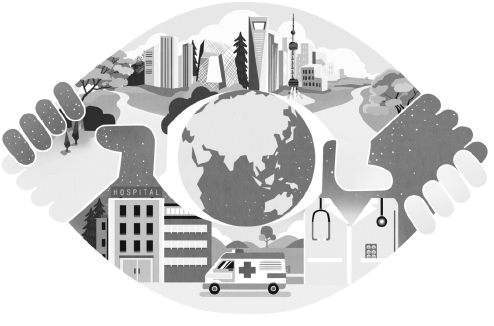Coordinated response can control outbreak

The novel coronavirus, or COVID-19, has now spread to nearly 80 countries affecting about 90,000 people. Although the overwhelming number of COVID-19 patients is in China, more and more cases are being detected in other countries. Since many of the people who have tested positive for COVID-19 in other countries do not have a recent travel history to China, COVID-19 is gradually becoming a global pandemic. The World Health Organization has accordingly raised the alert level to "very high".
The COVID-19 outbreak is causing harm to both people and economies across the world. The first aspect is already visible. As of now, human casualties have been the highest in China. But the number of infected are rising rapidly in the Republic of Korea, Japan, Italy and Iran. From its earlier concentration in Asian countries, particularly North and Southeast Asia, COVID-19 has begun spreading to other parts of Asia, and Europe. It is probably only a matter of time before the virus is detected in practically all parts of the world. Such an eventuality will have significant impacts on global public health.
Not all countries equally equipped to fight outbreak
But all countries are not equally prepared to handle the outbreak. Countries such as Japan, the ROK, Singapore, the United States, Italy-and China-h(huán)ave the financial capacity for implementing the most stringent precautionary measures. They also have modern public health facilities comprising good doctors, capable nurses and efficient pathology laboratories. From the advanced level of mechanical screening put in place at various airports of many countries to the high degree of isolation in quarantines, these countries are using their top and best facilities and practices.
However, the same cannot be expected from all countries. As the virus spreads to less-developed countries and regions, the ability of the latter to detect the virus will decrease. This would be due to a combination of limited detection facilities, insufficient healthcare infrastructure and weak knowledge of prevention practices.
The problems faced by the relatively poor countries would be aggravated by the lack of medical supplies. Across the world, there is a shortage of medical accessories for tackling COVID-19. These include face masks and alcohol-based hand sanitizers to be used as precaution and disinfectant. The shortage was visible even before the epidemic assumed its current proportions. It is expected to get worse because China-one of the major global producers of such products along with Southeast Asian countries-h(huán)as been forced to cut back production due to the outbreak.
Global economic damage could be substantive
The shortage of medical accessories is only a small part of the collateral economic damage COVID-19 is likely to inflict on the global economy. The scale of economic damage would be substantive. They could include massive disruptions in various supply chains-semiconductors, automobiles, smartphones, pharmaceuticals, chemicals and garments-that depend critically on China, as the country is a major producer of parts, components and raw materials used upstream in these chains.
At the same time, China has also, over the years, developed as an important final market for many consumer products thanks to the steady increase in the country's per capita income. Both segments of the supply chains are going to be affected, particularly upstream supplies would be affected due to reduced production in China.
It is already reported that containers leaving Chinese ports with supplies are getting stuck in other countries' ports as necessary documents for unloading are taking a long time to reach from China, because offices in the country have not been functioning normally with many employees working from home. At the downstream end, COVID-19 would lead to a reduction in overall economic activity and lower incomes across most of China. This is reducing the purchasing power of households and individuals and their ability to maintain, let alone increase, the current consumption level.
Slowdown in China will impact rest of the world
As China's economic growth rate is expected to reduce, at least in the next couple of quarters, the impact will be felt on the rest of the world. China is very significant for the global tourism industry, both in terms of foreign tourists visiting China and Chinese tourists travelling across the rest of the world. Travel advisories issued by various countries have already blocked the flow of tourists. At the next level, the tourism and aviation industries are bracing to tackle the large number of cancellations and low number of new bookings, as more and more countries report new COVID-19 cases.
The scale of the outbreak has definitely caught people by surprise. The rise in the number of new cases, and WHO's warning on the unpreparedness of the world for tackling a pandemic, needs to be taken seriously. Affected countries need to collaborate among themselves by sharing information on the number of cases, travel histories of people and precautionary and control measures. In the absence of such policies, the COVID-19 outbreak could acquire even more fearful dimensions.
Also, countries that detected coronavirus cases in the initial stages, and therefore have gained some experience in tackling the virus, must share their knowledge of containing the disease with those countries that are less prepared to tackle COVID-19. Otherwise, poor countries would be fatally hit.
The author is a senior research fellow and research lead (trade and economic policy) at the Institute of South Asian Studies, National University of Singapore.
The views don't necessarily reflect those of China Daily.

Today's Top News
- Shenzhou XXI spaceship undocks from combination
- China's economy remains generally stable in Oct
- Xi meets Thailand's king
- Xi holds welcome ceremony for visiting Thailand's king
- China's retail sales up 2.9% in Oct
- Shenzhou XX crew set to return after space debris delay






























